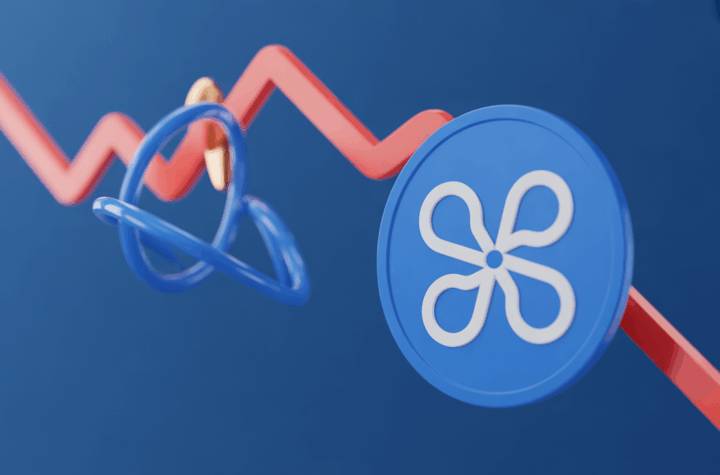
DeFi Lending in Q1 2025: Yield Compression, Institutional Growth, and Market Maturity
DeFi’s Evolution in Early 2025
While yields across major DeFi lending platforms have significantly declined, innovation at the market’s fringes underscores the sector’s continued evolution. Ryan Rodenbaugh, CEO of Wallfacer Labs and the team behind vaults.fyi, notes that these shifts highlight DeFi’s growing maturity and stability.
The Great Yield Compression
DeFi yields have declined across all major lending platforms:
- The vaults.fyi USD benchmark dropped below 3.1%, falling under the U.S. 1-month T-bill yield (~4.3%) for the first time since late 2023. This benchmark, which averaged nearly 14% in late 2024, has steadily fallen.
- Spark has implemented four consecutive rate cuts in 2025, reducing yields from 12.5% to 4.5%.
- Aave’s stablecoin yields for USDC and USDT on mainnet hover around 3%, a sharp contrast from higher yields just months ago.
This significant compression signals a market cooldown from late 2024’s exuberance, with lower borrower demand across major platforms.
The TVL Paradox: Rising Deposits Despite Falling Yields
Despite decreasing yields, major stablecoin vaults have seen remarkable growth:
- The largest vaults on Aave, Sky, Ethena, and Compound have collectively quadrupled in size, growing from $4 billion to $15 billion over the past 12 months.
- Despite Spark’s rate cuts, TVL has tripled since the start of 2025.
Even as yields drop from 15% to below 5%, capital remains in DeFi, reflecting increasing institutional trust in these protocols as financial infrastructure rather than mere speculation tools.
The Rise of Curators: DeFi’s New Asset Managers
A transformative trend in DeFi lending is the rise of curators—entities managing and optimizing lending vaults. Morpho and Euler have pioneered this model, introducing curators who:
- Evaluate markets and set risk parameters.
- Optimize capital allocation to enhance yields.
- Actively manage risk strategies, bridging passive lenders and yield sources.
Notably, firms like Gauntlet, previously service providers to platforms like Aave and Compound, now manage nearly $750 million in TVL, generating millions in annual revenue. Per Morpho’s dashboard, curators have accumulated nearly $3 million in revenue and are projected to earn $7.8 million in 2025.
Top-performing curator strategies have sustained higher yields by accepting higher-yielding collaterals at more aggressive LTV ratios, particularly leveraging Pendle LP tokens. This riskier yet calculated approach has resulted in yields of 5-8% base and 6-12% inclusive of token rewards—outpacing the vaults.fyi benchmark.
Market Structure: DeFi’s New Lending Landscape
The lending market is now distinctly stratified:
- Blue-chip Infrastructure (Aave, Compound, Sky)
- Resemble traditional money market funds.
- Offer low-risk, moderate yields (2.4-6.5%).
- Capture the bulk of TVL growth.
- Infrastructure Optimizers & Strategy Providers
- Base Layer Optimizers (Morpho, Euler) enhance capital efficiency.
- Strategy Providers (MEV Capital, Steakhouse, Gauntlet) deliver yields up to 12% on USDC and USDT.
This dual-layer system allows for flexible yield optimization while preserving security, with strategy providers iterating rapidly on lending opportunities.
Where the Yields Are: Chain-by-Chain Analysis
Despite Layer 2 (L2) expansion, Ethereum mainnet remains dominant in yield opportunities.
- Established L2s (Arbitrum, Base, Polygon, Optimism) show depressed yields, while Base emerges as a secondary yield hub.
- Newer chains (Berachain, Sonic) provide higher yields due to incentive programs, but long-term sustainability remains uncertain.
The DeFi Mullet: FinTech Meets DeFi
Coinbase’s Bitcoin-collateralized loans powered by Morpho on Base exemplify the “DeFi Mullet” concept—fintech interfaces in the front, DeFi in the back. This integration enables users to borrow up to $100,000 in USDC against Bitcoin holdings, seamlessly incorporating DeFi into mainstream finance.
As Coinbase’s Max Branzburg puts it: “Coinbase is coming on-chain, bringing millions of users with their billions of dollars.” The move signals a future where users leverage Ethereum-based DeFi protocols without direct awareness—much like the internet’s underlying protocols today.
What’s Next? Key Catalysts for 2025
Several trends could shape DeFi lending in the coming months:
- Democratized Curation: AI-driven tools may enable retail users to curate their own lending strategies.
- Real-World Asset (RWA) Integration: Expanding RWAs could introduce less crypto-correlated yield sources.
- Institutional Adoption: Increased comfort with DeFi infrastructure could drive capital inflows.
- Specialized Lending Niches: Market segmentation may cater to more specific financial needs beyond pure yield farming.
Conclusion
DeFi lending in 2025 is marked by yield compression, institutionalization, and a maturing market structure. Platforms that efficiently balance risk while optimizing capital across various strategies will be best positioned to thrive in this evolving landscape.






More Stories
DOGE drops to $0.18 amid long-term holder exits and a looming death-cross price pattern.
Asia Markets: Cautious Calm Settles Over Bitcoin as Risk Positions Rebuild
“Analyst Dubs It ‘Bitcoin’s Silent IPO’ While Dissecting Market Stagnation in Viral Essay”